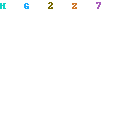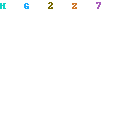The term open source describes practices in production and development that promote access to the end product's source materials. Some consider open source a philosophy, others consider it a pragmatic methodology. Before the term open source became widely adopted, developers and producers used a variety of phrases to describe the concept; open source gained hold with the rise of the Internet, and the attendant need for massive retooling of the computing source code. Opening the source code enabled a self-enhancing diversity of production models, communication paths, and interactive communities.Subsequently, the new phrase "open-source software" was born to describe the environment that the new copyright, licensing, domain, and consumer issues created.
The open source model includes the concept of concurrent yet different agendas and differing approaches in production, in contrast with more centralized models of development such as those typically used in commercial software companies. A main principle and practice of open source software development is peer production by bartering and collaboration, with the end-product, source-material, "blueprints," and documentation available at no cost to the public. This is increasingly being applied in other fields of endeavor, such as biotechnology.
what is the linux features?
#The only time a system requires a reboot is when there is a major hardware upgrade (or failure) or kernel upgrade. If these don’t occur, it’s common for the system to be up for years.
# Use the software as they wish, for whatever they wish, on as many computers as they wish, in any technically appropriate situation.
# Have the software at their disposal to fit it to their needs. Of course, this includes improving it, fixing its bugs, augmenting its functionality, and studying its operation.
# Redistribute the software to other users, who could themselves use it according to their own needs. This redistribution can be done for free, or at a charge, not fixed beforehand
# Linux and many Linux applications are distributed in source form. This makes it possible for you and others to modify or improve them. You're not free to do this with most operating systems, which are distributed in binary form. For example, you can't make changes to Microsoft Windows or Microsoft Word - only Microsoft can do that.
# The X Window System is a Graphical User Interface (GUI) developed at the Massachusetts Institute of Technology (MIT). In some ways one can compare the X Window System with early versions of Microsoft Windows. Just as Microsoft Windows was an application that ran on top of MS-DOS, X Window is a graphical environment that runs on Unix and Unix-like operating systems. The X Window system, however, is simply a program that draws graphics to the display environments take care of the look and feel of the desktop, aid provide a wide range of configuration options and functionality.
# Nobody should be restricted by the software they use. There are four freedoms that every user should have:
# the freedom to use the software for any purpose,
# the freedom to change the software to suit your needs,
# the freedom to share the software with your friends and neighbors, and
# the freedom to share the changes you make.
When a program offers users all of these freedoms, we call it free software (free not refer to price but
freedom)


2 June 2011 at 13:25
free for download??
2 June 2011 at 13:26
good information...!!
o0o!!
2 June 2011 at 13:32
yeah..free to download dude..
2 June 2011 at 13:33
hope this information will help u..GG..
2 June 2011 at 14:05
better u arrange da paragraph carefully,,make me feel dizzy meyh,,
2 June 2011 at 14:47
Ok bro..my mistake bro. I also dun know why. But i will repair it
10 June 2011 at 03:22
good jon
12 June 2011 at 13:48
better u arrange da paragraph carefully,,make me feel dizzy meyh
i agree with thiss,,,so serabut